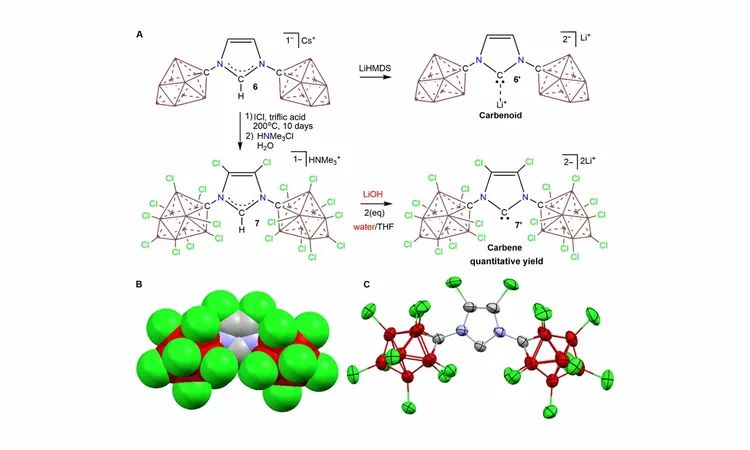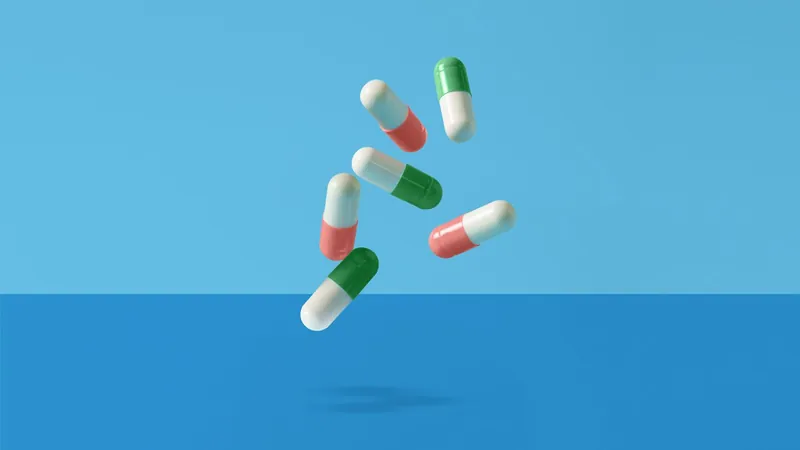
Revolutionary Discovery: Scientists Validate 1958 Vitamin B1 Theory!
2025-05-23
Author: Li
Unraveling a Historic Hypothesis
In a groundbreaking twist, scientists have vindicated a long-dismissed 1958 hypothesis about vitamin B1, or thiamine. Initially deemed far-fetched, the theory suggested that this essential vitamin could transform into a highly reactive intermediary during crucial biochemical reactions.
The Game-Changing Research
Led by Professor Vincent Lavallo at the University of California, Riverside, recent studies confirm the theory's validity. Researchers have demonstrated that vitamin B1 can indeed form a reactive entity known as a carbene, intriguing scientists worldwide.
What are Carbenes?
Carbenes are unique structures that possess only six valence electrons in their carbon atom, making them unusually reactive. They typically vanish almost instantly after formation, particularly in environments like water, which is often hostile to such molecules.
Defying Doubts - A Watershed Moment
This groundbreaking research marks the first observation of a stable carbene in a watery environment, a feat previously thought impossible. Lavallo remarked, "People considered this a crazy idea, but it turns out Breslow was right all along." Thiamine plays a pivotal role in fundamental bodily functions, including energy production from sugars.
Unpacking Past Skepticism
Historically, carbenes were thought too unstable to coexist with water because they would react too rapidly. Early experiments yielded disappointing results, with scientists consistently unable to observe carbenes, reinforcing a belief that they couldn't survive in aqueous solutions.
Innovative Solutions - The Molecular Shield
To tackle this conundrum, Dr. Varun Raviprolu and his team crafted a scientific breakthrough: a molecular shield that protected the carbene from the water's reactive forces. This protective measure allowed them to observe the carbene's behavior, confirming Breslow’s predictions.
A New Era for Eco-friendly Manufacturing
The implications of this research extend far beyond the laboratory. The discovery reveals that carbenes could act as ligands in metal catalysts used in various industrial processes, paving the way for greener, more efficient production methods while reducing reliance on toxic solvents.
Revolutionizing Pharmaceutical Production
By leveraging water as a solvent, researchers aim to drastically cut costs and minimize the environmental impact of chemical reactions used to create pharmaceuticals and everyday materials known for generating considerable waste. This could mark a major shift towards sustainable chemistry.
Mimicking Nature's Chemistry
The study's success in stabilizing carbenes could enhance our understanding of cellular processes, which rely heavily on water-based reactions. Better replication of these conditions can provide deeper insights into enzyme functions, offering exciting prospects for medical advancements.
Looking Ahead - The Future of Vitamin B1 Research
The confirmation that carbene intermediates can persist in watery environments opens new avenues of inquiry, raising tantalizing questions about other unstable molecules present in biological systems. Lavallo's team aims to apply this methodology to uncover further hidden components crucial to major biological reactions.
A Call to Embrace the Unlikely
This astonishing discovery underscores the importance of rigorous scientific investigation, reminding us that theories once deemed implausible can lead to incredible breakthroughs. Raviprolu's closing words resonate clearly: “What seems impossible today might be achievable tomorrow if we invest in science.”
Published Research
These findings are detailed in the reputable journal Science Advances, marking a significant contribution to the field of biochemistry.


 Brasil (PT)
Brasil (PT)
 Canada (EN)
Canada (EN)
 Chile (ES)
Chile (ES)
 Česko (CS)
Česko (CS)
 대한민국 (KO)
대한민국 (KO)
 España (ES)
España (ES)
 France (FR)
France (FR)
 Hong Kong (EN)
Hong Kong (EN)
 Italia (IT)
Italia (IT)
 日本 (JA)
日本 (JA)
 Magyarország (HU)
Magyarország (HU)
 Norge (NO)
Norge (NO)
 Polska (PL)
Polska (PL)
 Schweiz (DE)
Schweiz (DE)
 Singapore (EN)
Singapore (EN)
 Sverige (SV)
Sverige (SV)
 Suomi (FI)
Suomi (FI)
 Türkiye (TR)
Türkiye (TR)
 الإمارات العربية المتحدة (AR)
الإمارات العربية المتحدة (AR)